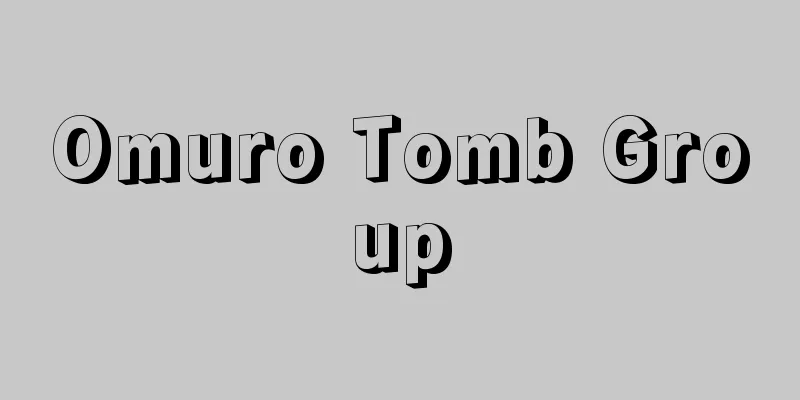Omuro Tomb Group

|
<br /> A group of ancient tombs in Matsushiro-machi, Nagano City, Nagano Prefecture. It is located about 6km southeast of Nagano City, on three ridges that branch off from the hills south of the Chikuma River, and in two valleys between them. Distributed in a belt-like shape over an area of about 2.5km2 at altitudes of 350-700m, the group of tombs is made up of a total of about 500 tombs built between the early 5th century and the 8th century. From the west, the group of tombs is divided into five subgroups of different sizes: Kanai-yama, Chatan, Kajo, Omuro- dani , and Kitayama . The group of tombs includes one keyhole-shaped tomb made of piled earth, and there are also tombs made of mixed earth and stone, but about 330 of them are piled-up stone mound tombs. Most of the piled-up stone mounds are circular, about 10m in diameter, but there is no other group of tombs in Japan with such a large number of piled-up stone mounds. There are about 40 of these burial mounds with a unique structure known as a gabled roof, with slabs of stone arranged on the ceiling of the chamber to form a triangular gabled roof. These are rare across Japan and are a distinctive feature of the Omuro Tomb Group. Excavated remains include Hajiki and Sueki ware, bead-patterned mirrors, short armor, horse equipment, knives, jewels , and horse bones, with the large number of horse equipment being a distinctive feature. The horse bones were only skulls, and were buried in the vestibule of the horizontal-hole-type stone chamber along with a large amount of Hajiki and Sueki ware. As such, the Omuro Tomb Group is important as the largest group of stone mound tombs in Japan, and the main part of the Omurodani group was designated a national historic site in 1997. There is also a theory that the stone mound tombs are related to the burial system of Goguryeo , and the gassho-style stone chambers to the burial system of Baekje . About 20 minutes walk from Omuro Station on the Nagano Electric Railway Yashiro Line. Source: Kodansha National Historic Site Guide Information |
|
長野県長野市松代町にある古墳群。長野市街の南東約6km、千曲(ちくま)川南側の丘陵から派生する3つの尾根上と、それに挟まれた2つの谷に立地する。標高は350~700m、約2.5km2の範囲に帯状に分布し、5世紀前半~8世紀に築かれた総数約500基の古墳群である。古墳群は西から金井山、北谷、霞城(かじょう)、大室谷(おおむろだに)、北山の大小5つの支群に分かれている。古墳群には盛り土による前方後円墳が1基あり、そのほかに土石混合墳も見られるが、約330基が石を積み上げた積み石塚古墳である。積み石塚の墳形はほとんどが直径10mほどの円墳だが、日本ではきわめて珍しい積み石塚が、これほど多く密集する古墳群はほかに存在しない。そして、合掌形石室と呼ぶ特異な構造を備えたものが約40基あり、石室の天井部に板状の石を三角形の切り妻屋根のように組み合わせた合掌形石室は、全国でも珍しく大室古墳群の特徴となっている。出土遺物は土師器(はじき)や須恵器(すえき)、珠文鏡、短甲、馬具、刀子(とうす)、玉類、馬骨などで、なかでも馬具が多いのが特色といえる。馬骨は頭骨だけで、横穴式石室の前庭部に多量の土師器や須恵器と一緒に埋納されていた。このように大室古墳群は日本最大の積み石塚古墳群として重要であることから、大室谷支群の主要部分が1997年(平成9)に国の史跡に指定された。積み石塚は高句麗(こうくり)の墓制と、合掌形石室は百済(くだら)の墓制と関係があるとする説もある。長野電鉄屋代(やしろ)線大室駅から徒歩約20分。 出典 講談社国指定史跡ガイドについて 情報 |
Recommend
Shoes (kutsu/shoes) - shoes
Japanese footwear that covers and encases the foot...
Ogano Higi - Ogano Higi
A 6th century medium. The ancestor of the Ogami cl...
Guangming Daily - Koumyou Nippon
A Chinese daily newspaper. First published in Shan...
Gion Otsukayama Kofun
...The mirror in the southern coffin is a triangu...
Blind molerat
A general term for a mammal of the genus Spalax in...
Sridhara (English spelling)
...Pātā is a collection of completely mechanical ...
Epiphany - Epiphany
...It was finally conquered by Sargon II in 720 B...
Sherbet - Sherbet (English spelling)
Sherbet is a food made by freezing fruit juice wi...
Angyo
A district in the southeastern part of Saitama Pr...
Peroxysome
...Also called microbodies. Small granules in the...
Steuerersparung
...Actions aimed at reducing the tax burden of ta...
Kabira - Kabira
...Any group that shares a common ancestor for ma...
Silvanus
The Roman god of the wilderness and forests. The a...
sparganosis
...The important second intermediate hosts in Jap...
Deep Sea Nakatsu - Deep Sea Nakatsu
A monk of the Muso school of the Rinzai sect in t...









